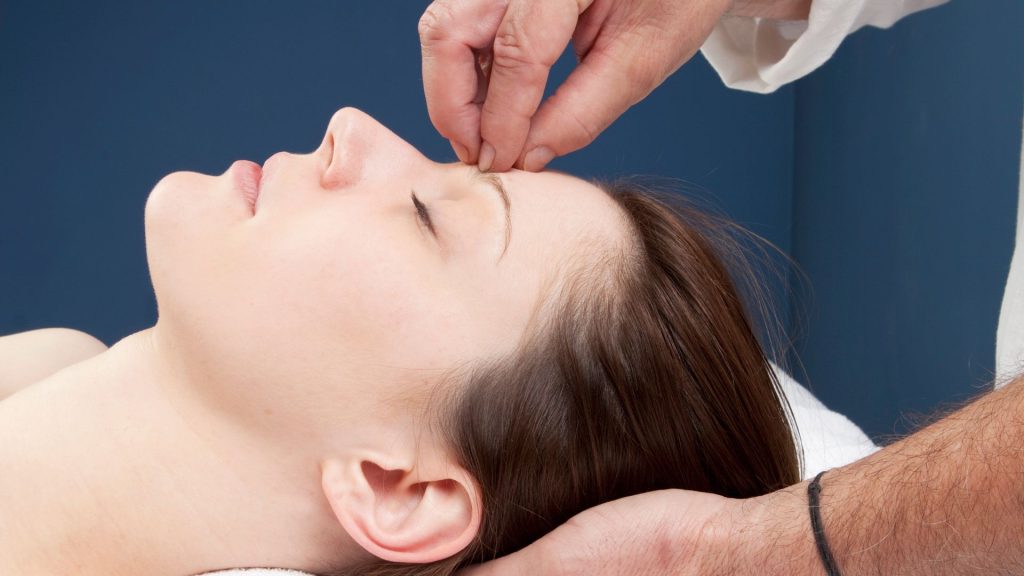Acupuncture, exercise, stress reduction techniques and mindfulness meditation have all been shown to effectively help alleviate migraine symptoms. These alternatives are frequently combined with prescription medications or when these drugs don’t provide relief.
Migraine treatment aims at both relieving symptoms and preventing future attacks, with pain-relief medications and preventive medicines often being the go-to solutions.
Yoga
Yoga is an effective mind/body therapy to relieve the anxiety that often accompany migraines. Furthermore, it improves body awareness of discomfort allowing you to detect when discomfort first starts to form.
Studies have demonstrated the efficacy of yoga for managing migraine symptoms, including frequency, duration and intensity. Yoga may even decrease pharmacological treatments to some degree.
A 2014 study reported that yoga combined with conventional care proved highly successful at decreasing migraine frequency and intensity among 60 participants, thanks to yoga’s benefits in increasing vagal tone and cardiac autonomic balance.
Biofeedback
Biofeedback therapy is a form of mind-body therapy that teaches you to control certain bodily functions, such as your heart rate, blood pressure, muscle tension and electrical activity in the brain. Electrodes are attached to your body during a biofeedback session and the information displayed via sound (varying pitch tone) or visual cues such as flashing lights or graph lines on a monitor screen.
Relaxation exercises and other techniques provided by therapists are designed to change these physiological responses, helping alleviate migraine symptoms as well as reduce anxiety levels and promote restful sleep. This approach may also aid in improving migraine-related anxiety levels and help enhance migraine treatment results.
Meditation
Patients who do not respond well to conventional pharmaceutical treatments or experience side effects often turn to alternative therapies like meditation as an alternative solution. Meditation is an exercise designed to reorganize mind patterns and enhance distraction filters, giving patients relief from common anxiety triggers.
Participants participating in this mind-body technique focus on breathing and relaxing their muscles to reduce stress, which is an often-cited migraine trigger.
Researchers recently conducted a study and found that spiritual meditation helped reduce migraine headaches and physiological reactivity to stress while increasing pain tolerance, leading to reduced medication usage.
Massage
Many migraine sufferers don’t respond well to conventional pharmacological treatments and seek complementary and integrative medicine options, including massage as a therapy modality.
Migraine headaches can be debilitating. They typically manifest themselves with headaches in the head and face, often accompanied by visual symptoms like sparkly spots or zigzag lines and nausea, as well as physical sensations such as light sensitivity, sound sensitivity or smell sensitivity.
Massage therapy has been shown to decrease migraine intensity and symptoms in multiple studies. One such research experiment demonstrated that combined treatments for self-reported migraine symptoms proved more successful than either treatment alone.
Chiropractic care
At least 15% of US residents suffer migraines, with women being three times more likely than men to be affected. Migraine is considered the fifth leading cause of disability worldwide and many seek complementary and integrative medicine as a source of relief.
Studies have indicated that spinal manipulation may alter how nerves transmit signals throughout the brain, providing potential relief and prevention of migraine headaches. Massage, acupuncture and diet changes may also help alleviate migraine symptoms.
Other studies have demonstrated that certain supplements such as butterbur (Piper nigrum) can be effective at preventing migraine headaches; however, more well-designed studies must be completed in order to verify this evidence.
Nutritional supplements
Everyone experiences headaches at some point; however, migraines differ in that they can become so intense and debilitating as to force people away from work, school and social activities. Migraines have an impactful economic cost with lost wages and healthcare expenses rising alongside disruption in child care and household chores.
Many people turn to supplements to prevent or treat their migraines, commonly referred to as nutraceuticals, for help. These are generally affordable solutions without needing a valid prescription.
Numerous studies have demonstrated that taking nutritional supplements such as magnesium, coenzyme Q10, riboflavin (vitamin B2) feverfew and fish oil could reduce migraine attacks significantly.
Exercise
Migraine treatments vary depending on who’s experiencing it and your doctor can help determine the most effective remedies for you.
Exercise can help relieve migraine pain by stimulating the release of endorphin, a natural painkiller produced in our bodies that acts to lower stress levels – often the source of migraine symptoms.
Try to engage in at least 30 minutes of moderate intensity activities each day such as walking, jogging and cycling. Make sure that you eat prior to and after exercising; additionally consult your physician if taking prescription headache medications or experiencing other health concerns before initiating any new fitness programs.


